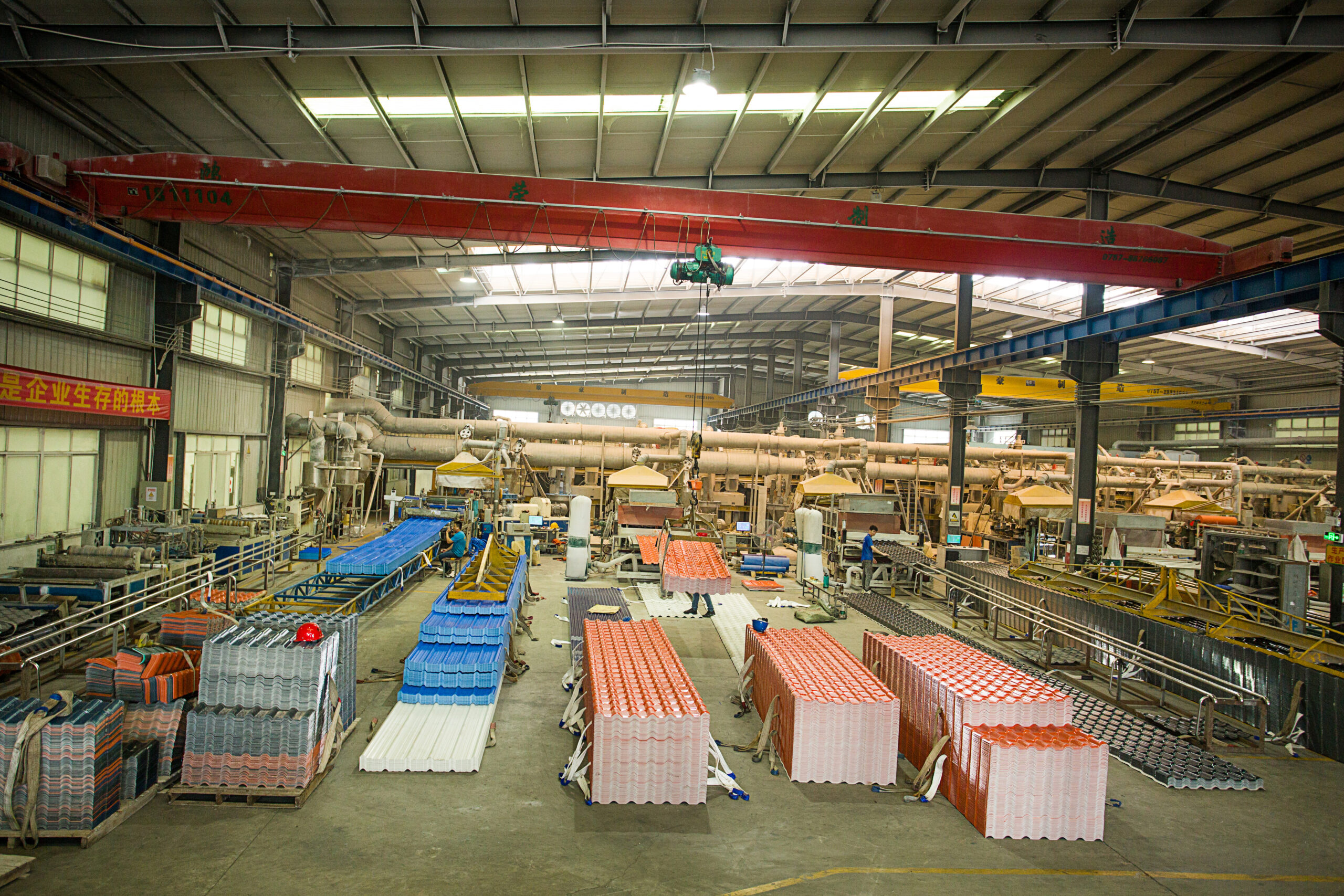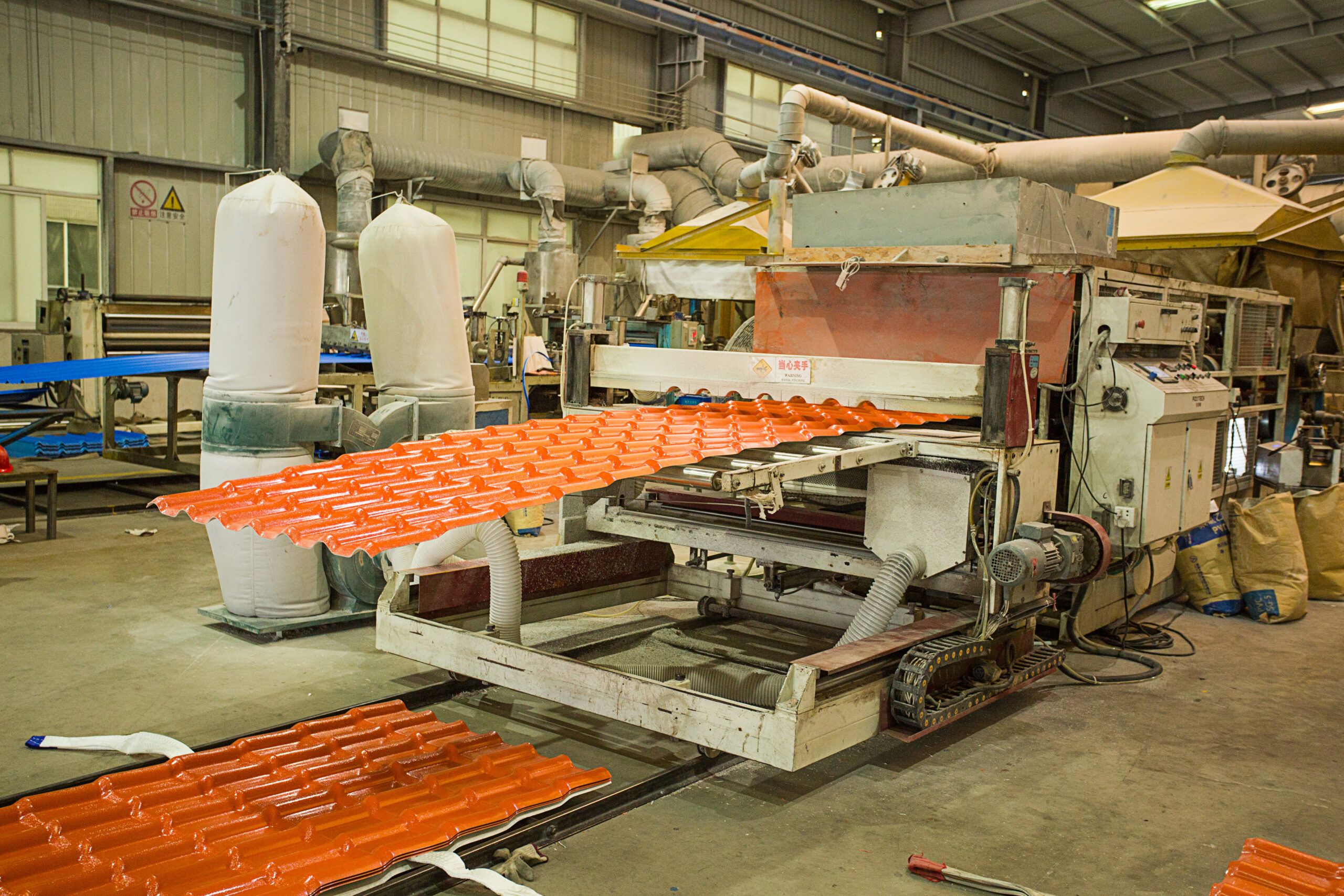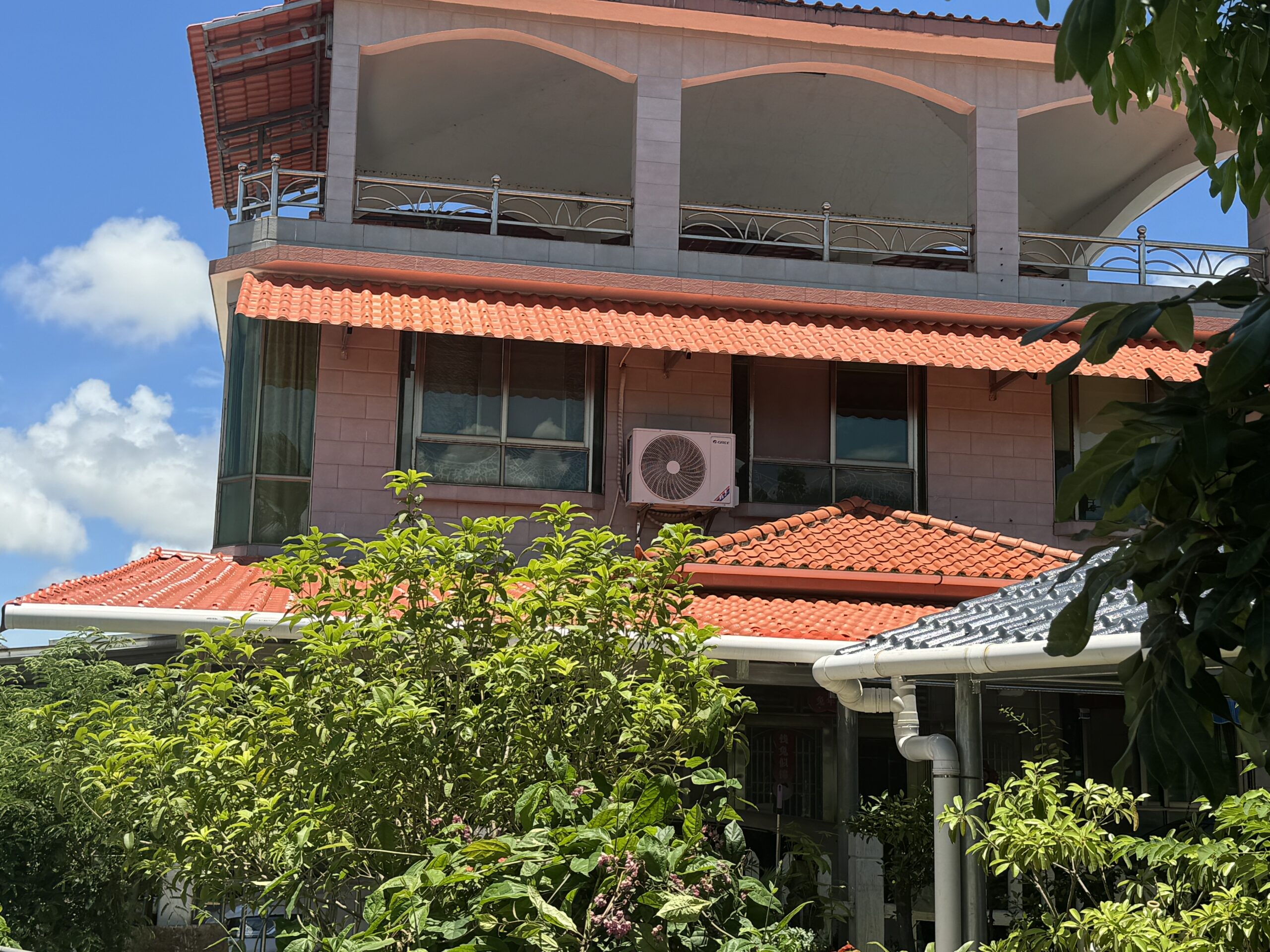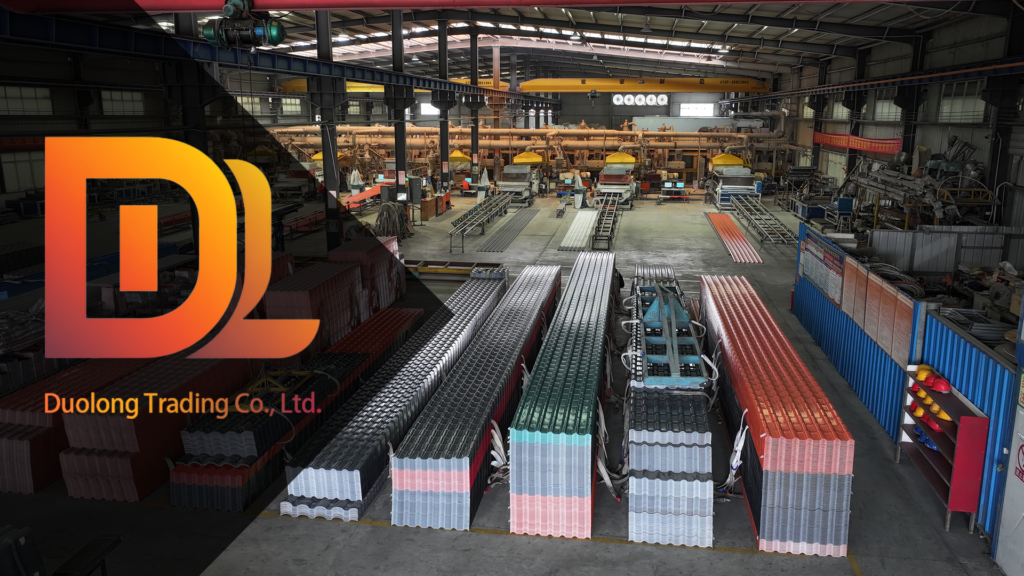In recent years, the construction industry across ASEAN countries has entered a phase of rapid growth. From large-scale infrastructure projects to housing developments and commercial buildings, the demand for durable and cost-effective roofing materials is higher than ever. For contractors, wholesalers, and distributors in the region, sourcing the right roofing products has become a key factor in ensuring project success.
China, as the world’s largest producer and exporter of building materials, offers a strong supply chain advantage. Its roofing materials, such as ASA resin tiles, PVC roofing sheets, and FRP transparent tiles, are well-known for their quality, competitive pricing, and reliable delivery capacity. By importing from China, ASEAN buyers can access a wide variety of roofing solutions that meet different climate and project requirements, while also maintaining control over budget and timelines.
This guide will walk readers step by step through the process of importing roofing materials from China to ASEAN markets, covering logistics, tariffs, supplier evaluation, and risk management. The goal is to provide practical insights that help businesses reduce uncertainty, streamline operations, and build sustainable partnerships with Chinese manufacturers.
Cross-Border Procurement and Logistics Overview
The process of importing roofing materials from China to ASEAN involves more than just buying and shipping goods—it requires a systematic approach to procurement, transportation, and compliance. Typically, the workflow includes several key steps: identifying reliable suppliers, negotiating terms, preparing export documents, arranging international logistics, and completing customs clearance in the destination country.
For ASEAN buyers, understanding these logistics is crucial. First, most roofing materials are bulky and heavy, making freight cost optimization a top priority. Buyers often need to decide between sea freight, which is cost-effective for large shipments, and air freight, which offers speed but at a higher expense. Sea freight is generally the preferred choice for roofing tiles, especially when importing in full container loads (FCL), which provide better protection and lower unit costs.
Another important factor is the selection of shipping terms, such as FOB (Free on Board), CIF (Cost, Insurance, and Freight), or DDP (Delivered Duty Paid). Each option shifts different responsibilities between the buyer and supplier, impacting cost control and risk management. For example, CIF allows buyers to rely on suppliers for transportation and insurance, while FOB gives buyers more flexibility to choose their own logistics partners.
Ultimately, having a clear logistics plan helps avoid delays, reduces hidden costs, and ensures that roofing materials arrive safely and on time—an essential factor in keeping construction projects on schedule.

Tariffs and Transportation Costs
One of the most critical factors in importing roofing materials from China to ASEAN is the calculation of tariffs and transportation costs. Unlike domestic purchases, cross-border imports involve multiple layers of fees, such as customs duties, value-added tax (VAT) or Goods and Services Tax (GST), port handling charges, and inland transportation within the destination country.
For ASEAN countries, tariff policies vary. Under the ASEAN-China Free Trade Agreement (ACFTA), many roofing materials can enjoy preferential duty rates, sometimes as low as 0–5%, provided that the goods meet the rules of origin requirements. Buyers need to ensure that their suppliers provide a Certificate of Origin (CO Form E) to qualify for these reduced tariffs. Without it, standard import duties may apply, which can significantly increase the landed cost.
Transportation costs also play a decisive role. Sea freight rates are influenced by factors such as shipping season, global fuel prices, and container availability. During peak construction seasons or global shipping disruptions, freight rates can rise sharply. Buyers should also account for destination charges, including unloading fees, customs inspection fees, and local delivery costs.
To optimize expenses, many importers consolidate shipments, negotiate long-term contracts with freight forwarders, or choose ports with lower handling charges. A well-planned cost strategy not only saves money but also makes imported roofing materials more competitive against local alternatives.
Key Considerations When Choosing Suppliers
Selecting the right supplier in China is not just about getting the lowest price—it is about ensuring long-term reliability, consistent product quality, and smooth communication. Roofing materials, especially ASA synthetic resin tiles, APVC tiles, and FRP transparent sheets, are products with a long service life. Therefore, buyers need to carefully evaluate their suppliers before committing.
First, certification and quality standards should be prioritized. A trustworthy supplier provides internationally recognized certifications such as ISO9001 or SGS reports, which indicate strict production management. For roofing materials, the presence of ASA weatherproof layers, UV resistance tests, and load-bearing reports are critical indicators of durability.
Second, production capacity and lead time are important. Many large projects, such as residential communities or government housing schemes, require bulk deliveries within tight schedules. Buyers should assess whether the supplier has a modern factory, automated production lines, and sufficient inventory to handle urgent orders.
Third, transparency in raw materials and processes is a major trust factor. Suppliers who openly share details about using virgin ASA materials, imported UV stabilizers, or double-layer fiberglass reinforcement demonstrate higher credibility compared to those using recycled or inferior substitutes.
Lastly, customer service and after-sales support play a key role. A good supplier should provide timely updates, professional technical guidance, and a willingness to solve problems such as installation challenges or logistics coordination. Long-term cooperation depends on a balance of price, service, and quality—not price alone.

Case Study: Importing ASA Resin Tiles for a Housing Project in Vietnam
To better understand how importing roofing materials from China benefits ASEAN buyers, let’s look at a real case scenario. A mid-sized construction contractor in Ho Chi Minh City, Vietnam, was tasked with supplying roofing for a government-supported affordable housing project. The requirement was clear: the roofing needed to be durable under tropical conditions, lightweight for fast installation, and cost-effective to meet budget limits.
The contractor decided to source ASA synthetic resin tiles from a Chinese manufacturer. After initial discussions, the supplier provided a full set of product certifications, including UV resistance test reports and load-bearing data. The contractor also requested samples to verify the surface gloss, color stability, and installation efficiency.
In terms of cost, the Chinese supplier offered a competitive price with an average 10–15% lower landed cost compared to local Vietnamese distributors, thanks to the preferential tariff rate under the ASEAN-China Free Trade Agreement. The Certificate of Origin (Form E) ensured that the import duty was reduced to nearly zero.
Logistically, the tiles were shipped by sea freight to Cat Lai Port in Ho Chi Minh City. With the supplier’s support and the contractor’s freight forwarder coordination, customs clearance was completed smoothly. The project team was able to install the tiles within the planned timeline, saving both time and labor costs due to the lightweight design.
The result was highly successful: the housing project not only met government requirements but also received positive feedback from residents for the roof’s modern look and heat-resistance performance. The contractor subsequently established a long-term supply agreement with the Chinese manufacturer for future projects.

Conclusion and Action Recommendations
The demand for roofing materials in Southeast Asia continues to rise, driven by rapid urbanization, infrastructure development, and government-backed housing projects. Importing from China is no longer just about finding a cheaper source—it is about securing long-term, reliable partnerships that ensure consistent quality, favorable trade terms, and scalable supply.
For contractors, distributors, and wholesalers, the key takeaway is to approach procurement strategically. Start by evaluating product certifications, confirming raw material transparency, and verifying production capacity. Request samples to ensure the roofing materials meet project standards before placing bulk orders. Work closely with suppliers to optimize shipping routes and leverage trade agreements such as the ASEAN–China FTA to minimize tariffs.
Moreover, choosing the right Chinese supplier can significantly reduce project costs and risks. By focusing not only on price but also on service and technical support, buyers can achieve faster installations, lower labor expenses, and stronger project competitiveness.
Now is the right time for Southeast Asian buyers to strengthen their supply chains. With the right supplier, importing roofing materials from China can deliver better performance, greater cost efficiency, and sustainable growth for your business.


